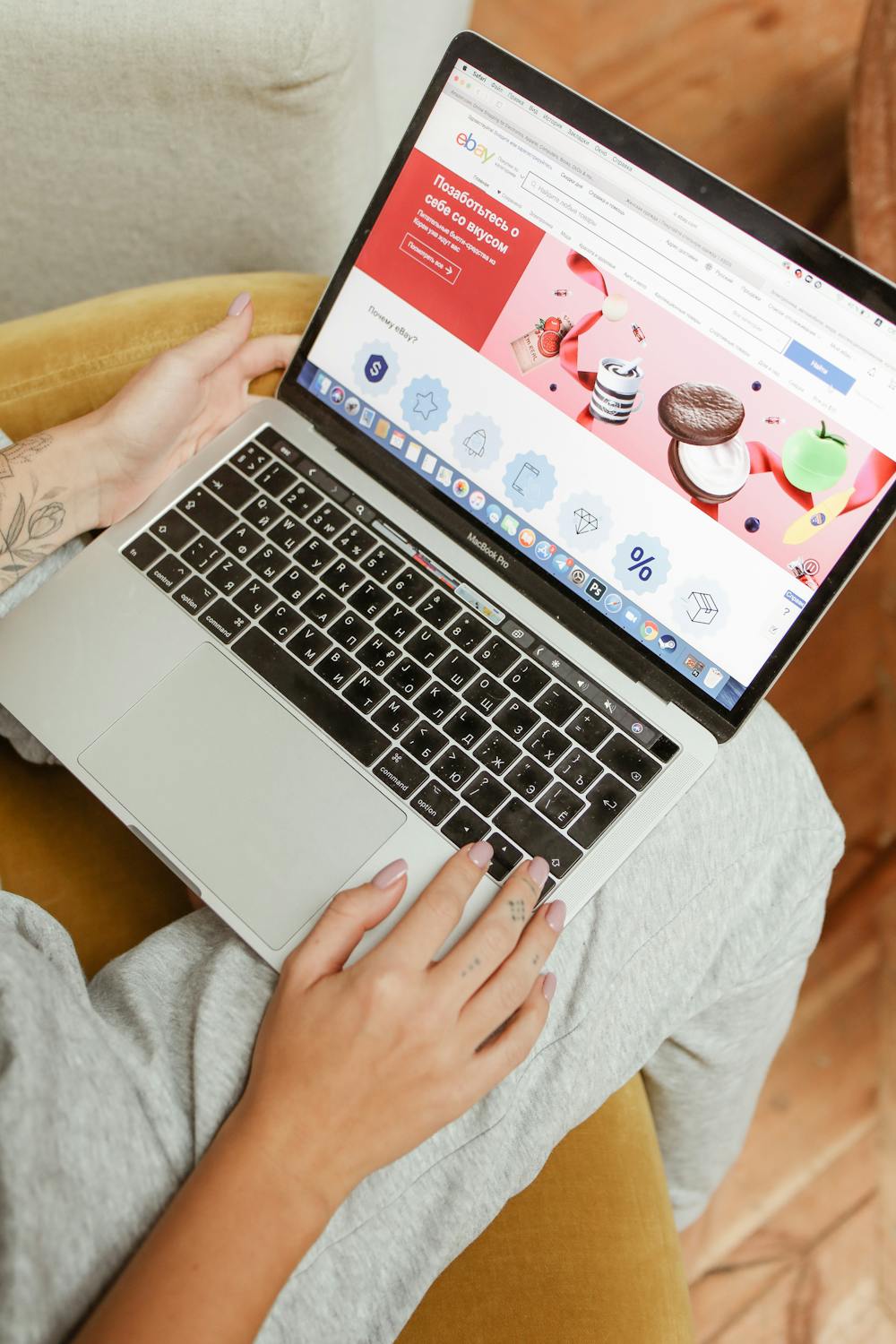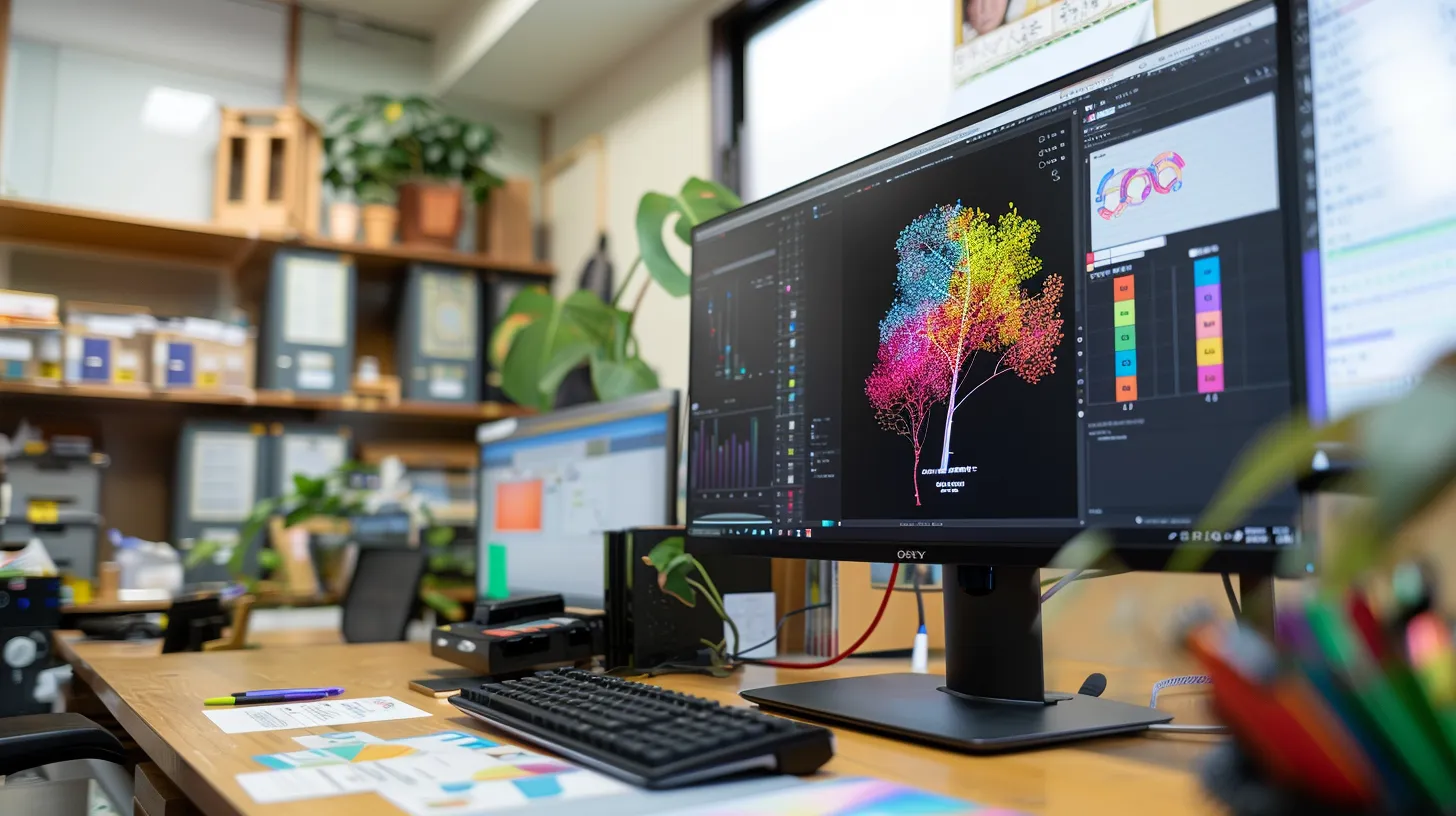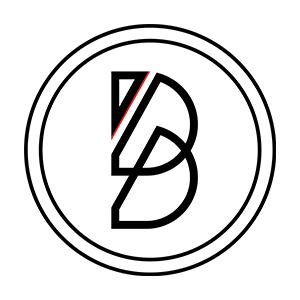Color choices in web design significantly impact user behavior and conversion rates. This article explores which colors effectively drive conversions and how to implement them in your web design strategy. We’ll examine proven color combinations, practical implementation techniques, and real-world examples of successful color schemes. By the end, you’ll have actionable insights to optimize your website’s color palette for improved user engagement and higher conversion rates.
Key Takeaways
- Color choices significantly influence user behavior and emotional responses in web design
- Strategic use of complementary colors and contrast enhances visual appeal and guides user attention
- A/B testing and user feedback are crucial for optimizing color schemes and improving conversion rates
- Limiting color palettes to 3-5 colors creates balance and maintains a cohesive, professional look
- Effective color combinations, like blue and orange, can balance trust with energy to drive conversions
What Is the Impact of Color on User Experience?

Color theory plays a crucial role in user experience, influencing emotional responses and cultural perceptions. Understanding the psychology behind color choices is essential for effective web design. From the calming effect of indigo to the association of certain hues with wealth, colors impact user behavior and decision-making. This section explores how strategic use of color can enhance user engagement and drive conversions.
Understand the Psychology Behind Color Choices
The psychology behind color choices in web design involves understanding the color wheel, cultural associations, and emotional responses. Each hue on the wheel evokes specific feelings, from the calming blue of the ocean to the energetic red of passion. The CMYK color model, used in printing, and its digital counterpart, RGB, form the basis for creating harmonious color schemes. Designers must consider how colors like beige can create a neutral backdrop or how vibrant shades can draw attention to key elements:
- Red: Excitement and urgency
- Blue: Trust and stability
- Green: Growth and nature
- Yellow: Optimism and clarity
- Purple: Luxury and creativity
Discover How Colors Influence Emotional Responses
Colors evoke powerful emotional responses in web design, influencing user behavior and decision-making. Teal, a blend of blue and green, conveys trust and growth, making it ideal for financial or environmental websites. Slate, a sophisticated gray hue, projects stability and professionalism, often used in corporate web development. The use of triangular shapes in design, combined with colors like violet, can create a sense of creativity and innovation. Web developers strategically employ these color combinations to elicit specific emotional reactions and guide users through the digital experience:
- Teal: Balance and tranquility
- Slate: Reliability and maturity
- Violet: Luxury and imagination
- Triangular shapes: Progress and direction
- Color combinations: Enhanced user engagement
Which Colors Are Proven to Boost Conversions?
Certain colors significantly impact conversion rates in web design. Blue fosters trust, red creates urgency, green promotes growth, and yellow captures attention. The strategic use of shades of purple, magenta, and other hues in images and typography can enhance user engagement. Understanding these color dynamics helps designers create visually appealing and effective websites that drive conversions.
Examine the Power of Blue for Trust and Reliability
Blue’s power in web design lies in its ability to evoke trust and reliability. Website builders often incorporate turquoise, a vibrant shade of blue, to create innovative and appealing designs. The Pantone Color Institute recognizes blue’s significance in digital landscapes, influencing user perceptions and behaviors. Designers can leverage blue’s calming effects to enhance user experience, guiding visitors through a website’s table of contents and encouraging conversions:
Analyze the Effect of Red on Urgency and Action
Red’s effect on urgency and action in web design is well-documented, dating back to Isaac Newton’s color theory. Websites often use red to create a sense of excitement and prompt immediate responses. This vibrant hue, reminiscent of citrus fruits, can evoke feelings of happiness and energy. However, designers must balance red with neutral tones like grey to prevent overwhelming users. The strategic placement of red elements can significantly impact conversion rates:
Explore the Appeal of Green for Growth and Health
Green’s appeal in web design stems from its association with growth, health, and optimism. Designers often incorporate green in logos and advertising to target audiences seeking eco-friendly or wellness-oriented products. The color’s versatility allows it to complement other hues, such as royal blue, creating visually appealing and balanced layouts that resonate with users and drive conversions.
Evaluate Yellow’s Role in Capturing Attention
Yellow’s role in capturing attention is significant in web design, especially when combined with shades of orange to create a vibrant aesthetic. As a secondary color, yellow harmonizes well with other hues, making it versatile for various design elements. Web designers often use yellow to highlight important information or call-to-action buttons, drawing the user’s eye and potentially increasing conversions. This color’s association with optimism and energy can be particularly effective in e-commerce and interior design websites, where it can evoke feelings of cheerfulness and creativity.
How to Choose Colors That Align With Brand Identity

Selecting colors that align with brand identity is crucial for effective web design. This process involves identifying a brand’s core message through color symbolism and matching color palettes to target audience preferences. Web designers must consider how color choices create atmosphere and evoke emotions, whether it’s the earthy tones of a forest-inspired logo or the sleek appearance of software interfaces. Strategic color selection enhances brand recognition and drives conversions.
Identify Your Brand’s Core Message Through Color
Identifying a brand’s core message through color involves selecting hues that reflect its values and personality. Deep purple can convey luxury and creativity, making it suitable for high-end brands or creative agencies. Yellow evokes optimism and energy, often used by companies aiming to project a cheerful, youthful image. Web design platforms like Webflow enable designers to experiment with color palettes, creating moods that align with brand identities. Fonts also play a crucial role, as their color and style can reinforce the brand’s message, whether it’s professional, playful, or innovative.
Match Color Palettes With Target Audience Preferences
Matching color palettes with target audience preferences involves understanding demographic and psychographic factors. Web designers use tools like Figma to create tailored color schemes, incorporating shades of green for eco-conscious brands or electric blue for tech companies. WordPress themes often feature neutral colors like taupe, which appeal to a broad audience and allow for easy customization. By aligning color choices with audience preferences, designers can create visually appealing websites that resonate with users and drive conversions.
Effective Color Pairing Techniques for Maximum Impact
Effective color pairing in web design enhances user interfaces and drives conversions. Complementary colors create harmony, while contrast highlights key elements. Accent colors, such as cyan or leaf green, guide user actions. Strategic color combinations improve communication and appeal to target audiences, considering factors like femininity. These techniques maximize the impact of web designs, influencing user behavior and conversion rates.
Create Harmony With Complementary Colors
Creating harmony with complementary colors is essential in web design, particularly for mobile apps where color psychology plays a crucial role. Designers often pair colors like lime with its complement to instill confidence in users while maintaining legibility. This technique leverages the principles of color theory to create visually appealing interfaces that drive conversions and enhance user experience.
Use Contrast to Highlight Key Elements
Contrast plays a vital role in web design, drawing attention to key elements and improving the user experience. Designers utilize the color wheel to create effective color schemes that enhance visibility and guide users through the interface. By carefully selecting contrasting colors, designers can highlight important features, such as call-to-action buttons or headings, making them stand out against the background. This technique not only improves aesthetics but also aids users with color blindness, ensuring accessibility for a wider audience:
Explore the Role of Accent Colors in Driving Action
Accent colors play a crucial role in driving user behavior and action on websites. Designers often use vibrant hues for call-to-action buttons, contrasting with the site’s primary color scheme to draw attention. For luxury goods websites, subtle accent colors like gold or silver can enhance the perception of exclusivity. Pastel accents create a softer, more approachable feel, ideal for wellness or lifestyle brands. Strategic use of accent colors in navigation menus guides users through the site, improving overall engagement and conversion rates.
Real-World Examples of Successful Color Schemes
Real-world examples demonstrate how successful color schemes drive conversions in web design. This section analyzes high-conversion websites and their color choices, examining case studies of effective color usage in marketing. Research on typeface and color combinations, along with prototyping tools, reveals how designers capture attention and influence user behavior. These practical insights provide valuable guidance for implementing effective color strategies in web design.
Analyze High-Conversion Websites and Their Color Choices
High-conversion websites often utilize strategic color schemes to enhance user experience and drive action. Effective designs incorporate sky blue to evoke trust and minimalism to reduce distractions, allowing key elements to stand out. Neon accents create visual interest, guiding users through the site’s space and drawing attention to important links. Successful websites balance these elements, using color psychology to influence user behavior and boost conversion rates.
Examine Case Studies of Effective Color Usage in Marketing
Case studies reveal the power of strategic color usage in marketing. Brands leverage the visible spectrum to evoke emotions and drive conversions. Nature-inspired palettes create a sense of calm, while high-contrast schemes capture attention. Some companies use cool blues to alleviate feelings of sadness, enhancing user experience. Effective color choices in web design consistently lead to increased engagement and higher conversion rates across various industries.
Testing and Optimizing Your Color Choices

Testing and optimizing color choices is essential for maximizing conversions in web design. This process involves implementing A/B testing for color variations, gathering user feedback on preferences, and tracking conversion rates to make data-driven adjustments. By utilizing CSS to experiment with different hues, including lavender, designers can enhance brand awareness and improve information delivery. These strategies help refine color schemes for optimal user engagement and conversion performance.
Implement A/B Testing for Color Variations
A/B testing for color variations is a critical step in optimizing web design for conversions. Designers can test different shades of blue for windows or buttons, analyzing how these changes impact user behavior and readability. This scientific approach allows for gender-specific color preferences to be considered, ensuring the design appeals to the target audience. By systematically testing color variations, web designers can improve both the aesthetic appeal and functional performance of their sites.
Gather User Feedback on Color Preferences
Gathering user feedback on color preferences is essential for optimizing web design and driving conversions. Marketing teams can utilize surveys and focus groups to understand how color temperature impacts perceptions of beauty and sophistication. For instance, navy blue often conveys trust and professionalism, making it a popular choice for corporate websites. By analyzing user responses to different color schemes, designers can refine their palette to enhance visual appeal and improve conversion rates.
Track Conversion Rates and Adjust Accordingly
Tracking conversion rates and adjusting color schemes accordingly is crucial for optimizing web design effectiveness. Web designers use their knowledge of color psychology to create palettes that evoke specific emotions and drive user actions. By analyzing how different color choices impact conversion rates, designers can refine their approach, ensuring the sky’s the limit for website performance. This process involves continuous testing and refinement, considering factors such as accessibility and emotional resonance:
- Monitor conversion rates for different color schemes
- Analyze user behavior in response to color changes
- Adjust palettes based on performance data
- Consider accessibility standards when refining colors
- Fine-tune emotional impact through strategic color adjustments
FAQs on Colors That Drive Conversions in Web Design
This section addresses common questions about color choices in web design that drive conversions. It explores effective color combinations, optimal color usage, colors to avoid, and methods to measure color impact. The discussion covers how color affects eye movement, website usability, and user perception of brightness. It also touches on color trends in fashion and the significance of green in design, offering practical insights for web developers and marketers.
What Color Combinations Are Most Effective?
Effective color combinations in web design often pair complementary hues to create visual interest and drive conversions. Blue and orange, for instance, form a powerful duo that balances trust with energy. Light backgrounds paired with darker text improve readability, while calm colors like soft blues promote a sense of tranquility, particularly beneficial for health-related websites. Designers strategically use these combinations to guide user attention and encourage specific actions:
How Many Colors Should I Use on My Website?
Web designers typically recommend using three to five colors on a website to create a balanced and effective color scheme. This approach allows for sufficient contrast and visual interest without overwhelming the user experience. The art of color selection involves choosing a dominant color, often inspired by nature, such as spring green, complemented by secondary and accent colors. By limiting the color palette, designers can evoke specific emotions and perceptions, avoiding colors that might trigger negative reactions like anger, while maintaining a cohesive and professional look that enhances user engagement and drives conversions.
What Colors Should Be Avoided in Web Design?
In graphic design for web, certain colors can hinder conversions and should be used cautiously. Bright, overpowering hues like scarlet can overwhelm users, while analogous colors lacking contrast may create confusion. Real estate websites often avoid harsh yellows or browns that can diminish property appeal. Brands should consider their target audience, as colors evoking negative emotions can deter engagement. Designers must balance aesthetic choices with user experience, ensuring color schemes enhance rather than detract from the website’s goals.
How Can I Measure the Impact of Color on Conversions?
Measuring the impact of color on conversions involves analyzing data from A/B tests and user behavior metrics. Designers can compare the performance of different color schemes for call-to-action buttons, using tools to track click-through rates and conversion percentages. By testing variations of primary colors against monochrome designs, web developers gain insights into user preferences. Paint selection for website backgrounds also plays a crucial role, with data revealing how different hues affect user engagement and ultimately drive conversions.
Conclusion
Color selection in web design profoundly impacts user behavior and conversion rates. Strategic use of colors like blue for trust, red for urgency, and green for growth can significantly enhance user engagement and drive action. Effective color pairing techniques, including complementary colors and contrast, highlight key elements and create visually appealing interfaces that resonate with target audiences. By implementing A/B testing, gathering user feedback, and continuously optimizing color choices, web designers can create high-converting websites that align with brand identity and meet user preferences.
